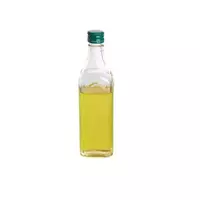Andirobe oil

We think that few residents of our latitudes know about such a plant as a crab tree or the Guiana karapa Andiroba. However, many could hear about the beneficial properties of andirobe oil. The andiroba crab tree is native to the South American region and is a deciduous tree that grows ubiquitously in Brazil, Colombia, Peru, Guyana and Guiana. Andiroba is an evergreen tree that often reaches a height of 30 meters.
The diameter of the andirobe trunk is usually one meter. In the growing region, especially strong plant wood is widely used. In addition, antirobe vegetable oil, which is obtained by cold pressing the fruits of the plant, is especially popular and in demand. The flesh of the antirobe fruit contains a significant amount of vegetable oil, which is enriched with various compounds useful for the human body.
Antirobe oil resembles other vegetable oils in appearance and has a yellow color, as well as a characteristic nut smell. Antirobe vegetable oil tastes bitter. It is worth noting that antirobe oil differs in its chemical composition, which contains a record amount of fatty acids. The chemical composition of the oil is enriched with vitamin F and is also rich in stearic, oleic, linolenic, myristic and linoleic acids.
Antirobe oil is unique in that it contains compounds such as alkaloids, triterpenes, as well as tannins, andirobine, limonoids and carapine in its chemical composition. It is worth noting that due to the content of gedunin, antirobe oil has antimalarial properties, such as compounds containing quinine. Antirobe oil has antiallergic, antiseptic, and also ansecticidal abilities.
Antirobe oil has been used for thousands of years in the region of plant growth for medical, as well as cosmetic and culinary purposes. Antirobe oil has a beneficial effect on the human body, and in addition helps in the treatment and prevention of a number of diseases. Antirobe oil can accelerate the healing process of wounds, as well as have anti-inflammatory, antimicrobial and antiprotozoal effects.
The use of antirobe oil helps to improve blood circulation. In the traditional medicine of the countries of South America, antirobe oil is used in the treatment of malaria, as well as arthritis, acne, dermatitis, sprains, deep damage to the skin, as well as muscle pain and herpes. In cooking, refined, i. e. double-purified antirobe oil is used, which in its properties does not differ from other types of culinary vegetable oils.
andirobe oil 884 kCal
Energy value of andirobe oil (Ratio of proteins, fats, carbohydrates - ju):
Proteins: 0 g (~ 0 kCal)
Fats: 100g (~ 900 kCal)
Carbohydrates: 0 g (~ 0 kCal)
Energy ratio (bj | y): 0% | 102% | 0%
 Español
Español Français
Français Português
Português Русский
Русский 简体中文
简体中文 繁體中文
繁體中文 日本語
日本語 한국어
한국어 العربية
العربية Türkçe
Türkçe Қазақ
Қазақ Deutsch
Deutsch Italiano
Italiano Українська
Українська
